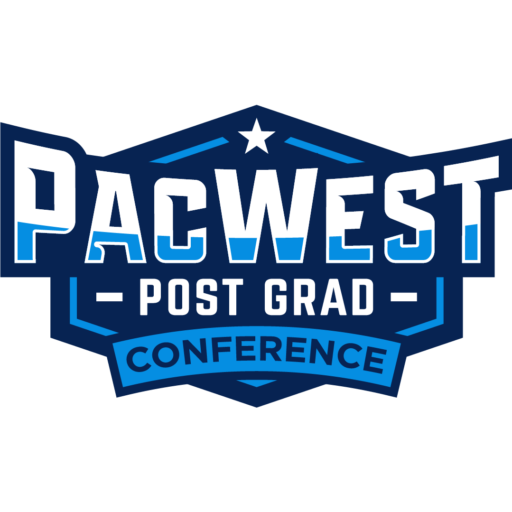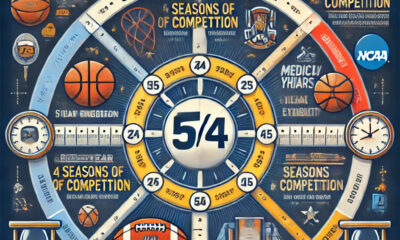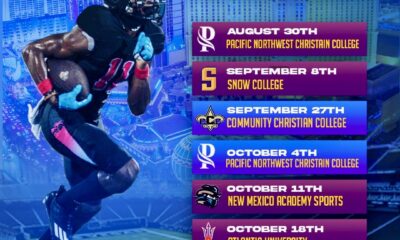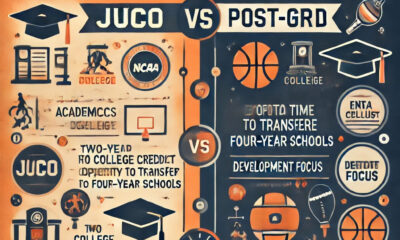Academics
Understanding the Different College Sports Divisions
Within the NCAA, there are three main divisions based on the level of competition
-
-
by
PWPGC

In the United States, college sports are organized into different divisions under the governance of two main organizations: the National Collegiate Athletic Association (NCAA) and the National Association of Intercollegiate Athletics (NAIA). Within the NCAA, there are three main divisions based on the level of competition, athletic scholarships offered, and commitment to sports programs. Here’s an overview of the different college sports divisions:
NCAA Division I (DI)
– Athletic Scholarships: Division I schools often offer the most athletic scholarships, including full scholarships in many sports.
– Competition Level: The most competitive level of college sports, with many athletes aiming for professional careers in their sport.
– Size of Schools: These schools tend to be larger in size, often with a significant student body.
– Commitment: DI programs demand a high level of time and commitment from athletes, including extensive practice schedules, travel for games, and rigorous training.
– Programs: Division I is home to some of the most well-known college sports programs, including major football, basketball, and soccer teams.
– Examples: University of Alabama (football), Duke University (basketball), University of Southern California (football), and University of North Carolina (basketball).
Key Subdivisions within Division I:
- Football Bowl Subdivision (FBS): Schools that compete in major college football with bowl games.
- Football Championship Subdivision (FCS): Schools that play at a slightly lower level in football but still offer a competitive experience.
- Non-Football Schools: Many DI schools, such as those in basketball or other sports, do not have football teams, but they still compete at a high level.
NCAA Division II (DII)
– Athletic Scholarships: Division II schools offer athletic scholarships, but they tend to provide fewer scholarships compared to Division I. They may offer partial scholarships as well.
– Competition Level: DII schools provide a high level of competition, but the pressure is somewhat less intense than in DI. Athletes in DII often balance sports with academics and extracurricular activities more easily.
– Size of Schools: DII schools are generally smaller than DI schools, with a student body ranging from several hundred to several thousand students.
– Commitment: DII athletes typically have a more balanced approach to college life, with sports being an important part of their college experience but not necessarily their full-time focus.
– Programs: Many schools offer a range of sports, including basketball, soccer, and volleyball.
– Examples: Grand Valley State University (football), University of California, San Diego (soccer), and University of Central Missouri (basketball).
NCAA Division III (DIII)
– Athletic Scholarships: Division III does not offer athletic scholarships. Students compete for the love of the game and for the chance to represent their school, but financial aid is based solely on academic merit or need.
– Competition Level: DIII schools are the least competitive of the NCAA divisions, but still feature high-level athletics.
– Size of Schools: These schools tend to be small, often with fewer than 2,000 students, and are often liberal arts colleges.
– Commitment: Division III athletes have a great deal of freedom to engage in a full college experience, balancing academics, extracurricular activities, and sports. Sports are typically less time-intensive than at higher divisions.
– Programs: DIII offers a variety of sports, including basketball, baseball, and track & field.
– Examples: Williams College (basketball), Amherst College (soccer), and Pomona-Pitzer Colleges (lacrosse).
NAIA (National Association of Intercollegiate Athletics)
– Athletic Scholarships: NAIA schools do offer athletic scholarships, but these programs tend to have fewer resources compared to NCAA DI schools.
– Competition Level: The level of competition in the NAIA is often described as between NCAA Division II and Division III, though some schools are very competitive.
– Size of Schools: NAIA schools are often smaller private or regional colleges, with a student body generally under 2,000.
– Commitment: NAIA athletes typically have more flexible schedules, with sports demanding less time compared to NCAA Division I or II, but the experience is still competitive.
– Programs: Like NCAA schools, NAIA schools offer a wide range of sports, from basketball to soccer, swimming, and more.
– Examples: Oklahoma Wesleyan University (basketball), Campbellsville University (soccer), and Georgetown College (football).
Key Differences Between NCAA Divisions
| Factor | NCAA Division I | NCAA Division II | NCAA Division III | NAIA |
| Scholarships | Full/Partial (many) | Partial (fewer) | None | Full/Partial |
| Competition Level | High | Moderate-High | Moderate | Moderate |
| School Size | Large | Medium-Large | Small | Small |
| Time Commitment | High | Moderate | Low-Medium | Moderate |
| Academic Balance | Lower (sports-focused) | Balance (sports & academics) | High (academics emphasized) | Balance |
Additional Considerations
– Athletic Culture: DI schools, particularly those with major football or basketball programs, often have a more intense athletic culture, with large fan bases and a high media profile. In contrast, DIII schools emphasize a more well-rounded college experience where sports are one of many facets of student life.
– Scholarships and Financial Aid: In addition to athletic scholarships, students may also qualify for academic scholarships or financial aid, which can vary across divisions. DI schools typically have more financial resources for scholarships, while DIII schools are more likely to focus on academic merit or need-based aid.
Ultimately, the best division for a student-athlete depends on their athletic ability, academic goals, and what kind of balance they want between their sports and academic pursuits. Whether you’re looking for a school with a strong athletic culture or one with a more well-rounded, balanced college experience, there’s a division to fit every athlete’s needs.


Must See
-


Academics
/ 1 year agoBreaking down the college 5/4 rule and benefits it has after attending a Post Grad Sports Academy
What is the College NCAA 5/4 rule
By PWPGC
 ad code here
ad code here Title
-


Football
/ 5 months agoPacWest Post Grad Conference Kicks Off with Inaugural 2025 Football Season Schedule for Perazen Elite Prep Academy
The stage is set for an electrifying debut as the PacWest Post Grad Conference...
By PWPGC -


Academics
/ 10 months agoPost High School program provides an opportunity to advance your college sports career!
The PacWest Post Grad Conference offers student-athletes an exceptional opportunity to gain exposure through...
By PWPGC







